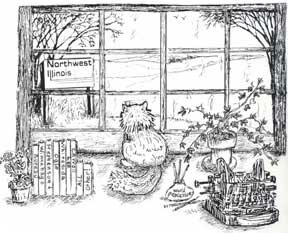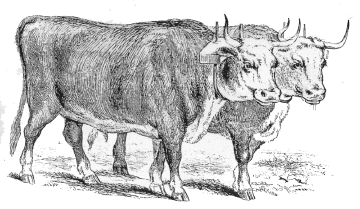
Discover rewarding casino experiences. 

Please Don't Quote Me PART III — The Tribune was published in Freeport but specifically for Carroll County readers. The “old” news was understandable, however, because it was of the Gold Rush and its local “49’ers” who went West. And remember, it took weeks, months even, for the news to travel the two, three thousand miles back to the Midwest and East Coast to reach its destination. However dated the news from the gold fields appeared. it was actually “current,” and mostly personal. |
When the 1913 Carroll County History was being written, its editor, C.L. Hostetter, used the few extant issues available of the Tribune for a brief mention of the Gold Rush as an important chapter, life-changing, in our country’s history. There is no other attention given that mid-century excitement at all. It changed the direction of the nation and our area as well. As pioneer Samuel Preston said, “More people left the county those years, than came to it.” In 1850 there were but a few thousand residents of Carroll County and only two towns, Savanna and Mt. Carroll, plus a few scattered settlements, trail side, such as Cherry Grove, a stage stop, and Elkhorn Grove, a rival in size to Savanna in growth. Mt. Carroll had only recently wrested the county seat from Savanna and had been the “capitol” for but a couple years. In 1849 when the first wagon trail left on March 27th that year it consisted of but one wagon drawn by oxen but there were thought to be ten to twelve men with it going to seek gold and look adventurous. Many of the gold seekers were either family of, or were pioneers from some twenty years earlier when the New Frontier was the lead mines. Mineral of all kinds lured Americans. There were five or six, or possibly more, wagons to have left the county with from four to twenty men in each group. The brief mention is not too accurate, nor clear!! The one left in ‘49 and the others in 1850 pulled by, number one: two span of horses or two yoke of oxen. One took seven horses for back-up purposes but horses and mules did not have the hardiness of the lumbering oxen, as it turned out. Trades were made. In the early spring of 1850, March 23rd and April 1st, wagons left and were noted; one leaving to cross the Mississippi, narrow and shallow, at Savanna and start the trek through Iowa going toward Council Bluff, on the opposite side, to the Missouri River. Information was gleaned from a diary, for one thing, of a school teacher, D.G. Shottenkirk, who had agreed to send their progress back to three wagon’s sponsor, Judge Emmert of Mt. Carroll (last week). Notes of the journey were sent back, it was said, but had become lost in the erratic mails of the period although Hostetter made no explanation of a diary entry other than reading the news in the couple issues of the Tribune that were available. Sorry to say, we have no other reference. How interesting to learn more. A book was written at the time, however, and will be briefly quoted here. It is very typical of the terrible hardships endured by most “49’ers” although they are not dwelled upon in Shottenkirk’s journal. Note the daily distances traveled. That alone was a hardship. Here from the “Mt. Carroll Tribune,” Volume 1, No. 18, 1851, the only known issues of the publication is presented in part California Journal, D.G. Shottenkirk. June 22, 1849—”A part of McPike and Strothers line passed us early this morning from St. Louis, Missouri. They had separated to take better advantage of the scarcity of grass, the mules generally looked goaded. We forded the river this morning at a good place. About a mile further the river and road ran together between rocky bluffs. There are emigrants names painted on the walls of the rocks. We had to ford the river twice extra on account of high rocks jutting out into the stream which is deep and has a rocky bottom. It requires a great deal of work for the drivers to keep the wagons from upsetting. A number of wagons immediately before us had great trouble with the wetting of most of their loading. We crossed however without wetting anything. We camped on the Sweet-Water again on the opposite side. We found a better wagon, lighter than ours (No. 1). We concluded to exchange it and leave ours. I gave it as my opinion that we should leave one wagon as our loading had become quite light. Our cattle showed some symptoms of failing and it would be easier on them and in the end would prove to our advantage but the majority of the company thought otherwise. “We spent the afternoon again in airing out our provisions and shortening the bed of Wagon No. 2. We found three or four light trunks into which Mr. Emmert packed his clothing, leaving the heavy boxes. Mr. Pyle came up and passed us this evening and left one ox who had become foot sore and could not be driven any further. June 23, 1849—”Habits of industry are cultivated by some, at least on this route, for I saw a lady on horseback busily engaged in sewing. “There is snow constantly in sight on the bluffs to the left. We saw a great number of dead horses and cattle. About four o’clock we came to a deep ford. We let the oxen graze and rest. Would they eat sage brush? Cooked a dish of hasty pudding. Hitched up again and drove two-three miles over high hills, crossing the Sweet Water. But turning off the road a half mile to the south side, we found some little grass. Drove twenty miles today. June 24, 1849—”There is snow close by our camp about ten feet deep. The cattle have very poor pickings here for there is nothing but snow and sage brush. There was an emigrant today who bought flour at twenty-one dollars a hundred and sold it for thirty-one within an hour. Bacon, however, sells more reasonable, ten cents a pound. There was an emigrant this evening who passed us who originally took passage on the “Pacific Line” but has since exchanged passage with a passenger on an ox team. Many more want to obtain such exchange. R.W. Reynolds has taken sick with the mountain fever. We have two others on the sick list, Callahan and J.L. Reynolds with the same disease. Distance, twenty-one miles. June 27, 1849—”The company has unanimously come to the conclusion that we had better leave one wagon to favor our cattle as much as we can. We accordingly took the bed of No. 3 wagon for the sake of the patent rubber top and put it on a new wagon as it was a better one. We burned the bed of the old and completed demolition by sawing the spokes out of No. 3 to use as stakes to fasten the cattle at night. After we had loaded the new wagon a violent storm came up of wind and rain. Our cattle filled themselves so well some of the boys thought they must have drunk alkali. June 28, 1849—”Our sick men are recovering rapidly. Distance eighteen miles.
June 30, 1849—”We rose by daybreak and in the company of four others, manned the two boats and in about an hour our two boats were across the Green River. The river is about ten feet deep and rising rapidly though the emigrants who passed us twenty-seven. Many did it with ease. Several dead horses floated down stream while we were crossing the wagons. We had something of a job crossing our cattle. They had little or no will to wade in. The water was very cold and it was disagreeable standing in the water so long. We were kept busy until by throwing stones and scaring them they finally crossed. We got them all across but three and then took them back to the ferry boat... Held them by the head and made them swim behind the ferry boat. When we came back to the ferry boat we found a great crowd collected there. The emigrants at the ferry had taken the body of a man that had been floating down the river. He was apparently about forty years old and been drowned maybe ten days ago. There was nothing by which to identify him. There was a daring act of heroism performed this afternoon that deserves to be rewarded, an act showing what a woman can do when confronted with danger and difficulty. A company from Ottawa, Illinois was crossing at the ferry next above us when the boat upset. There was a woman and two small children aboard at the time. The boat had floated off and careened on its side. The woman lashed one child about her neck and caught the other in her arms to get up on the side of the wagon bed and sustained herself in this position until a young snake Indian, seeing the imminent danger, leaned upon his horse, swam into the current, seizing the rope of the other ferry boat which they were trying to overtake her but only gained slowly. He swam down river until he overtook the wagon then he jumped from the horse leaving it to take care of itself, caught one of the children in this arms and helped the woman onto the boat. They rowed safely to shore. It seems impossible in that swift current but such is the fact. July 1, 1849—”We rose early and bidding the Green River adieu, started on a drive of fifteen miles without grass or water. The road was sandy and in many places covered with cobblestones which made it difficult for the cattle. Distance, fourteen miles.” This is the only known remnant of the diary of Shottenkirk’s description of a part of the “49’ers” trip to the Gold Rush. Another witness’ tale will be told next week.
|




